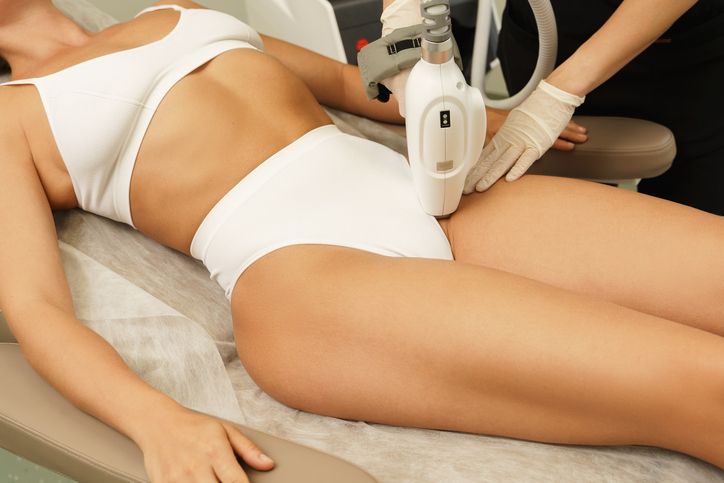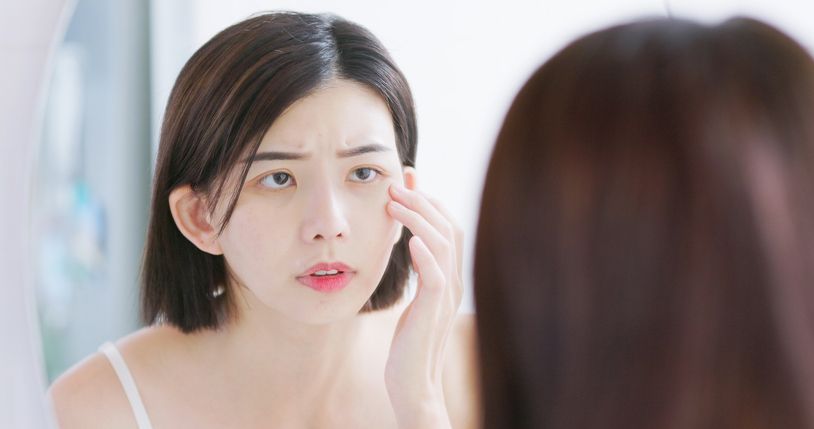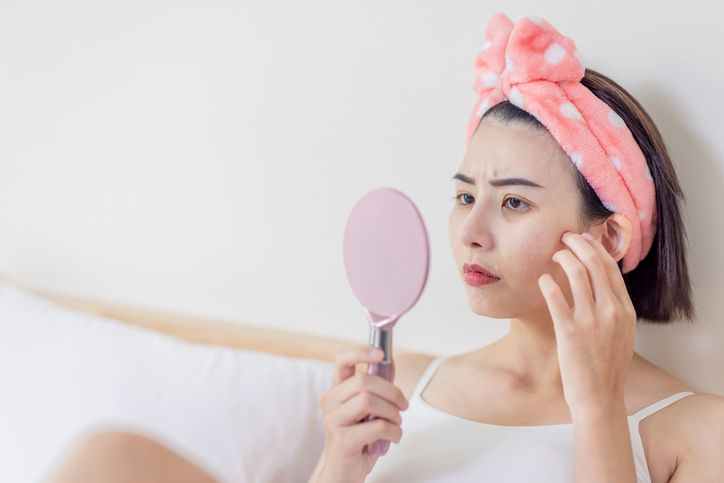- Home
- Trend
- Weight Loss Strategies
- Acne Tips
- Hair Health Information
- Blemish Removal Tips
- Acne Scar Removal Tips
- Muscle Building Techniques
- Intimate Care Tips
- Postpartum Intimate Care
- Eye Bags Wiki
- Tips for Face Slimming
- Secret of Permanent Hair Removal
- Breast Enlargement Tips
- Cure to Snoring
- Marionette Lines
- Skin-Tightening Secrets
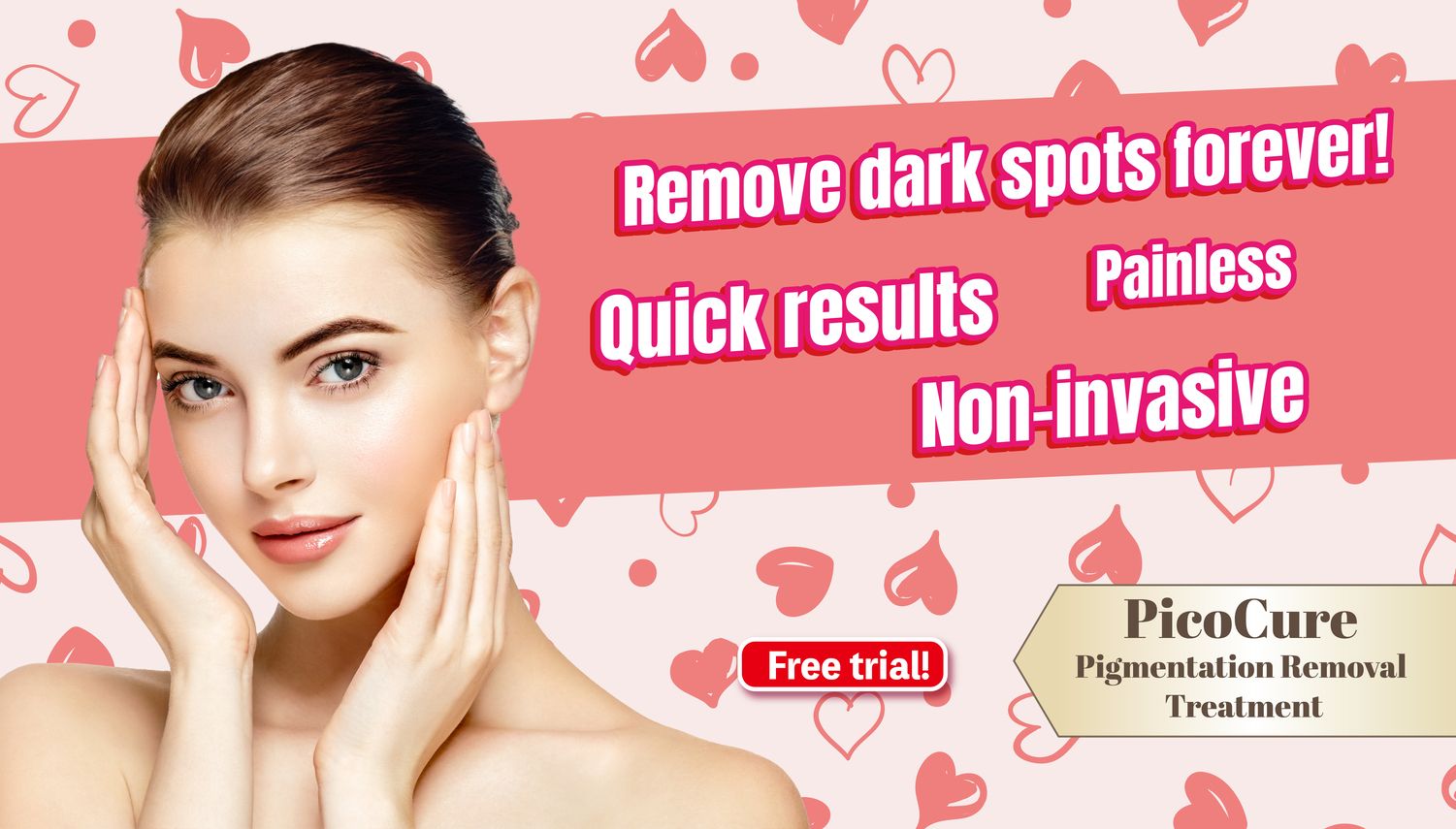
免費體驗
PicoCure Pigmentation Removal Treatment
1 Minute Self-Registration
Date should not be before minimal date
In our quest for flawless skin, we often find ourselves navigating through an ocean of skincare ingredients, each promising the moon. Among these, azelaic acid emerges as a beacon of hope for those battling dark spots, acne, blackheads, and rough skin texture. But what exactly is azelaic acid, and how does it work its magic on the skin? Let's dive deep into the world of azelaic acid, exploring its potential benefits and side effects, ensuring you're armed with the knowledge to harness its power effectively.
1
What is Azelaic Acid? How Does Azelaic Acid Work in the Skin Layers to Improve Skin Quality?

Azelaic acid is a naturally occurring dicarboxylic acid found in grains like wheat, rye, and barley. It's not just your ordinary skincare ingredient; it's a multi-faceted warrior, fighting against a plethora of skin concerns. When you use azelaic acid, you’re enlisting the help of a powerful agent that works by unclogging pores and refining the skin’s surface. It targets the keratinocytes, the cells in the epidermal layer of the skin, reducing the production of keratin, a key player in acne and comedone formation.
Moreover, azelaic acid is a champion in reducing skin inflammation and bacterial growth, making it a go-to for those with acne-prone skin. Its ability to interfere with the tyrosinase enzyme's activity also means it can effectively reduce hyperpigmentation, evening out your skin tone. In simpler terms, azelaic acid gently persuades your skin to be its best self, encouraging renewal and healing from within.
2
Benefits of Azelaic Acid

Azelaic acid isn't just a one-trick pony; its benefits are vast and varied:
Dark Spots and Discolorations
As a brightening agent, azelaic acid is recognized for its effectiveness in addressing hyperpigmentation on the face, contributing to a more even skin tone. It operates by inhibiting tyrosinase, an enzyme involved in melanin production, which plays a key role in the development of skin discolorations. By targeting this process, azelaic acid can aid in reducing the visibility of existing dark spots while also helping to prevent new ones from forming.
Rosacea (Anti-inflammatory)
By soothing inflammation, azelaic acid helps manage rosacea, reducing redness and the appearance of bumps and blemishes.
Acne (Antimicrobial)
Azelaic acid’s antimicrobial properties make it an effective treatment for acne, killing off bacteria that lead to breakouts.
Comedones
It prevents the formation of comedones by keeping the pores clear of clogged debris.
Skin Texture (Exfoliate)
By exfoliating the skin, azelaic acid improves skin texture, making it smoother and more radiant.
3
Potential Side Effects of Azelaic Acid

While azelaic acid is generally safe for most skin types, including sensitive skin, it's not without its potential side effects. Being informed can help you navigate any possible discomfort:
- Burning or stinging on your skin - Peeling, blistering, or flaking skin at the site of application - Skin dryness - Skin redness - Itching, tingling, or swelling - Worsening of asthma symptoms - Abnormal changes in skin color (hypopigmentation), especially in dark-skinned individuals - Tightness or pain in your joints - Hives - Fever - Shortness of breath
4
10 Best Azelaic Acid Products

1. The Ordinary Azelaic Acid Serum
- Texture and Scent: You'll find this serum has a smooth, primer-like texture that makes application easy, and it's free from any fragrance to minimize irritation, especially for you if you have sensitive skin. - Key Ingredients: It contains a 10% concentration of azelaic acid in a silicone base, enhancing both stability and skin penetration. - Unique Traits: The blend of a high concentration of azelaic acid with a silicone base sets this apart, offering both therapeutic and aesthetic benefits. - Pros: Great for improving your skin texture and lightening dark spots, all while being cost-effective. - Cons: However, the silicone texture might not suit everyone, particularly if you have oily or acne-prone skin.
2. Paula's Choice 10% Azelaic Acid Booster
- Texture and Scent: This booster offers a lightweight, creamy texture that blends easily and is fragrance-free, ideal for mixing with other skincare products or using solo. - Key Ingredients: A mix of 10% azelaic acid, salicylic acid (BHA), and licorice root extract for a multifaceted approach to clearer, more radiant skin. - Unique Traits: Its formula is crafted to enhance the efficacy of azelaic acid with salicylic acid, boosting exfoliating and skin-clearing properties. - Pros: Effective for a broad spectrum of skin concerns including acne, rosacea, and hyperpigmentation, suitable for all skin types. - Cons: The price may be a consideration for some. The combination of active ingredients might increase the risk of irritation if your skin is extremely sensitive.
3. Peach Slices Redness Relief Azelaic Acid Serum
- Texture and Scent: This serum has a lightweight, almost watery texture that quickly absorbs without leaving any residue or scent, perfect for layering. - Key Ingredients: Azelaic acid paired with calming agents like allantoin and caffeine, aimed at soothing your skin and reducing redness. - Unique Traits: It's specifically designed for sensitive skin, prioritizing gentle effectiveness and soothing properties. - Pros: Great for calming irritated skin and minimizing redness, with a hydrating, lightweight formula suitable for daily use. - Cons: It might not provide enough results for severe hyperpigmentation or deeply set acne without additional treatments.
4. The Inkey List Azelaic Acid Serum
- Texture and Scent: Offers a minimalist, slightly silicone-like texture that leaves your skin matte. It's free from added fragrances. - Key Ingredients: Boasts a 10% concentration of azelaic acid in a straightforward formula that keeps the focus on the active ingredient. - Unique Traits: The Inkey List emphasizes accessibility and education with this simple yet effective formulation, making it a great starting point for users new to azelaic acid. - Pros: Ideal for introducing azelaic acid into your skincare routine without the complications of additional actives. - Cons: Its simplicity may not fulfill the needs of users looking for additional moisturizing or anti-aging benefits.
5. Sesderma Azelac Ru Facial Serum
- Texture and Scent: This serum offers a silky, lightweight texture that sinks in quickly, with a light scent for a pleasant application experience. - Key Ingredients: It includes azelaic acid, 4-n-butylresorcinol, and niacinamide, creating a potent blend for tackling pigmentation and enhancing skin brightness. - Unique Traits: Aimed specifically at reducing hyperpigmentation, it targets melanin synthesis for a more comprehensive approach to evening out your skin tone. - Pros: Highly effective in lightening pigmentation and boosting overall skin radiance, suitable for all skin types, including sensitive skin. - Cons: The higher price and presence of fragrance may not be ideal for all users, especially those sensitive to scents.
6. Tula Clear It Up Acne Clearing and Tone Correcting Gel
- Texture and Scent: A gel-cream hybrid that provides a soothing, cooling sensation upon application, with a mild, refreshing scent. - Key Ingredients: Azelaic acid is combined with probiotics, tea tree oil, and hyaluronic acid, targeting acne, tone correction, and hydration. - Unique Traits: Incorporates probiotics to support your skin's natural barrier and microbiome for healthier skin. - Pros: A multi-tasker that tackles acne, hydrates, and corrects skin tone in one step, with a soothing effect for inflamed skin. - Cons: The presence of essential oils, beneficial for some, may cause sensitivity in others.
7. Urban Skin Rx Even Tone Cleansing Bar
- Texture and Scent: A solid bar that creates a rich lather for a thorough cleanse, featuring a clean, medicinal scent. - Key Ingredients: A blend of azelaic acid, kojic acid, and niacinamide designed to improve your skin tone, texture, and clarity. - Unique Traits: The solid bar format is convenient, especially for travel or minimalist skincare routines. - Pros: An all-in-one solution for hyperpigmentation and uneven skin tone, with a deep cleansing action. Travel-friendly. - Cons: It may be drying for users with dry or sensitive skin, and the bar format might not appeal to everyone.
8. SkinCeuticals Phyto A+ Brightening Treatment
- Texture and Scent: Rich, creamy, and absorbs well without leaving a greasy residue. It's fragrance-free, catering to sensitive skin. - Key Ingredients: Contains azelaic acid, alpha arbutin, and mulberry extract, addressing pigmentation and offering antioxidant benefits. - Unique Traits: Its premium formula not only targets pigmentation but also focuses on soothing and hydrating the skin. - Pros: A luxurious option for addressing hyperpigmentation while ensuring the skin is soothed and hydrated. Suitable for all skin types. - Cons: The high cost may not be accessible for all users. The rich texture might not suit those with oily skin.
9. The Ordinary Azelaic Acid 10% Suspension Brightening Cream
- Texture and Scent: Creamy, offering a matte finish. Fragrance-free, suitable for sensitive skin. - Key Ingredients: A high concentration of azelaic acid in a cream base, aimed at brightening and improving skin texture. - Unique Traits: High azelaic acid concentration at an accessible price, making it a popular choice. - Pros: Addresses a range of concerns including hyperpigmentation, acne, and texture. Budget-friendly. - Cons: Its heavier texture and matte finish may not be preferred by those with dry skin types.
10. Glytone Enhance Brightening Complex
- Texture and Scent: Lightweight cream that blends smoothly, with a fresh, clean scent. - Key Ingredients: Azelaic acid is paired with glycolic acid for dual exfoliation and brightening effects. - Unique Traits: The synergy between azelaic and glycolic acids boosts the skin's renewal process, effectively improving texture and reducing pigmentation. - Pros: Promotes an even skin tone and smoother texture, offering a comprehensive skincare solution. - Cons: Glycolic acid's inclusion requires diligent sunscreen use due to increased sensitivity to sunlight. It may not be suitable for very sensitive skin types.
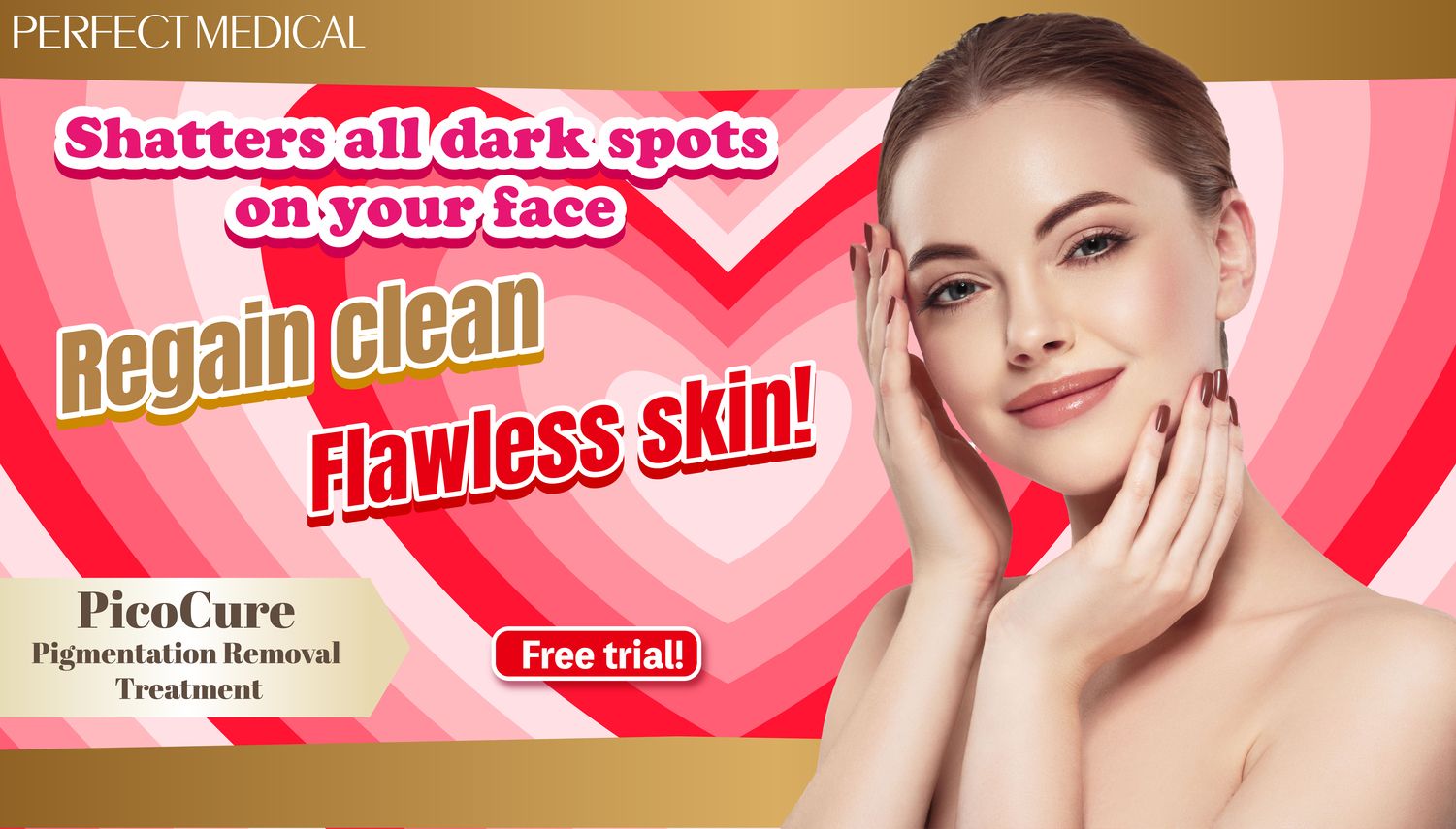
免費體驗
PicoCure Pigmentation Removal Treatment
1 Minute Self-Registration
Date should not be before minimal date
5
How Long Does Azelaic Acid Take to Work?

When you start using azelaic acid, patience is key. You might begin to notice improvements within the first 6 to 8 weeks, signaling that you’re on the right path. However, unlocking the full potential of this skincare champion often requires several months of consistent use. So, if immediate results are what you’re after, you might need to adjust your expectations with azelaic acid. It’s a marathon, not a sprint, but the results are worth the wait.
6
Should You Mix Azelaic Acid with These Ingredients?

Mixing skincare ingredients can sometimes feel like a complex puzzle. Here’s how to fit azelaic acid into your routine. Remember the golden rules when experimenting with azelaic acid and other potent ingredients: listen to your skin. Start slowly, introduce one product at a time, and always do a patch test to gauge how your skin reacts.
AHA/BHA and Azelaic Acid: A Trio with Caution
Combining AHA/BHA with azelaic acid can be a game-changer for your skin, thanks to their collective exfoliating powers. This trio can lead to a brighter complexion, reduced acne, and faded dark spots. However, they can be quite drying and may irritate your skin if not used properly. To keep your skin happy, always follow up with a moisturizer and start slow to minimize potential irritation.
Vitamin C: A Brightening Ally
Vitamin C and azelaic acid can be skincare soulmates, especially when you’re aiming for that elusive even skin tone and mark-free complexion. This dynamic duo works together to brighten your skin, reduce acne, and shield you from free radical damage. But, tread carefully, as both ingredients can be irritating and increase your skin’s sun sensitivity. A smart strategy is to apply Vitamin C in the morning and azelaic acid at night, ensuring you use sunscreen daily to protect your skin.
Retinol: Boosting Effects with Care
Pairing azelaic acid with retinol can elevate your skincare routine, targeting acne and hyperpigmentation more effectively by hitting different aspects of these conditions. While azelaic acid tackles bacteria and inflammation, retinol focuses on increasing cell turnover to reduce dark spots. However, this combination may heighten skin irritation and sun sensitivity. The golden rule? Use retinol at night to avoid sunlight breakdown and consider azelaic acid for your morning or nighttime routine, but don’t forget your daily sunscreen.
- Banishing Dark Spots: Effective Strategies for Hyperpigmentation
- The Inside-Out Glow-Up: Crafting A Brightening Supplements Formula For Healthy Skin
- Glow-Up Guide: Uncover The Reasons Behind Dull Complexion And Top Remedies
- What is Pico Laser Treatment? You Ultimate Guide to Achieving Spotless Skin: The Science, Benefits and More
7
How to Incorporate Azelaic Acid into Your Skincare Routine?

Incorporating azelaic acid into your skincare routine is a step towards achieving clearer, more radiant skin. Here’s how you can do it effectively:
Start with a Clean Base
Begin by washing your face with a gentle cleanser. This ensures that your skin is free of oil, dirt, and makeup, allowing the azelaic acid to penetrate more effectively.
Apply Azelaic Acid
Take a small amount of your azelaic acid product—be it a serum, toner, or cream—and apply it evenly across your face. A thin layer is all you need; applying more won’t boost its effectiveness and might lead to irritation.
Wash Your Hands
After application, make sure to wash your hands thoroughly. This prevents any residual product from coming into contact with sensitive areas or surfaces.
Let It Dry
Give the product some time to be fully absorbed by your skin. Once dry, you can proceed with the rest of your skincare routine, applying moisturizer or other treatments as usual.
Makeup Application
If you wear makeup, you can apply it over your azelaic acid product, provided the product has been properly absorbed. This ensures that your makeup goes on smoothly without affecting the azelaic acid's functionality.
Be Cautious
Take care to avoid getting azelaic acid in your eyes, nose, or mouth. If contact occurs, rinse thoroughly with water to prevent irritation.
Moderation is Key
Using too much azelaic acid can lead to skin irritation. Stick to a modest amount to enjoy the benefits without the downside.
8
How Often Should You Use Azelaic Acid?

Finding the right frequency for azelaic acid application is crucial for maximizing its benefits while minimizing potential irritation. Here’s what dermatologists suggest:
Start Slow
Begin with using azelaic acid once daily, choosing either morning or evening according to what fits best with your existing routine.
Monitor Your Skin’s Response
Pay close attention to how your skin reacts over the first few weeks. If you notice any signs of irritation, consider adjusting the frequency or amount used.
Increase Frequency Gradually
If your skin tolerates azelaic acid well, you can increase the application to twice a day. This can help in achieving faster results, especially for persistent skin concerns.
Avoid Harsh Combinations
While azelaic acid plays well with many ingredients, it's wise to avoid layering it with other harsh actives, at least initially. This helps in preventing over-exfoliation and irritation.

免費體驗
PicoCure Pigmentation Removal Treatment
1 Minute Self-Registration
Date should not be before minimal date
9
Who Should Not Use Azelaic Acid

Azelaic acid, though generally safe and beneficial for many, may not be suitable for everyone:
Very Sensitive Skin
If your skin is particularly sensitive, azelaic acid might cause discomfort like stinging or burning. In some cases, it could potentially worsen hyperpigmentation.
Allergy to Azelaic Acid
Naturally, if you have a known allergy to azelaic acid, it's best to avoid it altogether.
Pregnant or Breastfeeding
Azelaic acid is often considered safe during pregnancy and breastfeeding, marking it as a go-to for many expecting or new mothers dealing with skin concerns. However, consulting with a healthcare provider before introducing any new skincare product during these periods is crucial.
Broken Skin
Application of azelaic acid on broken skin could lead to irritation and discomfort.
Severe Skin Conditions
For those dealing with more serious or complicated skin issues, it's advisable to get a tailored treatment plan from a dermatologist.
10
Tips When Shopping for Azelaic Acid Products

Navigating the sea of azelaic acid products can be overwhelming. Here are some tips to help you make informed choices:
Concentration Matters
Prescription-strength azelaic acid products, usually around 15% to 20% concentration, are known for their efficacy. However, over-the-counter (OTC) options, typically at 10%, can also provide significant benefits, especially for mild to moderate concerns.
Formulation is Key
Azelaic acid is versatile, available in serums, cleansers, masks, creams, and gels. Consider what fits best into your current routine and what you're most likely to use consistently.
Complementary Ingredients
Products that combine azelaic acid with other skin-loving ingredients like niacinamide, vitamin C, or hyaluronic acid can offer additional benefits, addressing multiple concerns at once. However, be cautious about layering it with other potent acids right away, as this can lead to irritation.
- Are Acne Scars Permanent? The Truth of Whether You Can Remove Acne Scars
- Does Dark Spot Serum Work? Find Out The Best Dark Spot Correcting Methods
- What is Pico Laser Treatment? You Ultimate Guide to Achieving Spotless Skin: The Science, Benefits and More
- Unveiling The Mystery: Why Is My Skin Getting Darker Without Sun?
11
Regain Flawless Glass Skin with Hong Kong's No1 Dark Spot Solution: PicoCure Pigmentation Removal Treatment!

At Perfect Medical, our mission is to revolutionize your skincare experience with the latest advancements in cosmetic technology.
Consider our renowned PicoCure Pigmentation Removal Treatment. It utilizes the innovative strength of four laser wavelengths, each targeting specific pigmented spots, scars and blemishes by their size, hue, and depth, thus achieving comprehensive removal outcomes.
Our cutting-edge, ultra-rapid pulsed energy operates at speeds exponentially faster than traditional lasers. This enables the PicoCure laser energy to break down melanin precisely and efficiently, giving you quick and effective treatment outcomes.
Envision all the persistent dark spots on your fading away after just a few treatments, unveiling glowing, youthful, and smooth skin!
Eager to try out our celebrated technology and services at no cost? Sign up now for a free trial of Perfect Medical's PicoCure Pigmentation Removal Treatment, complete with an in-depth skin analysis!
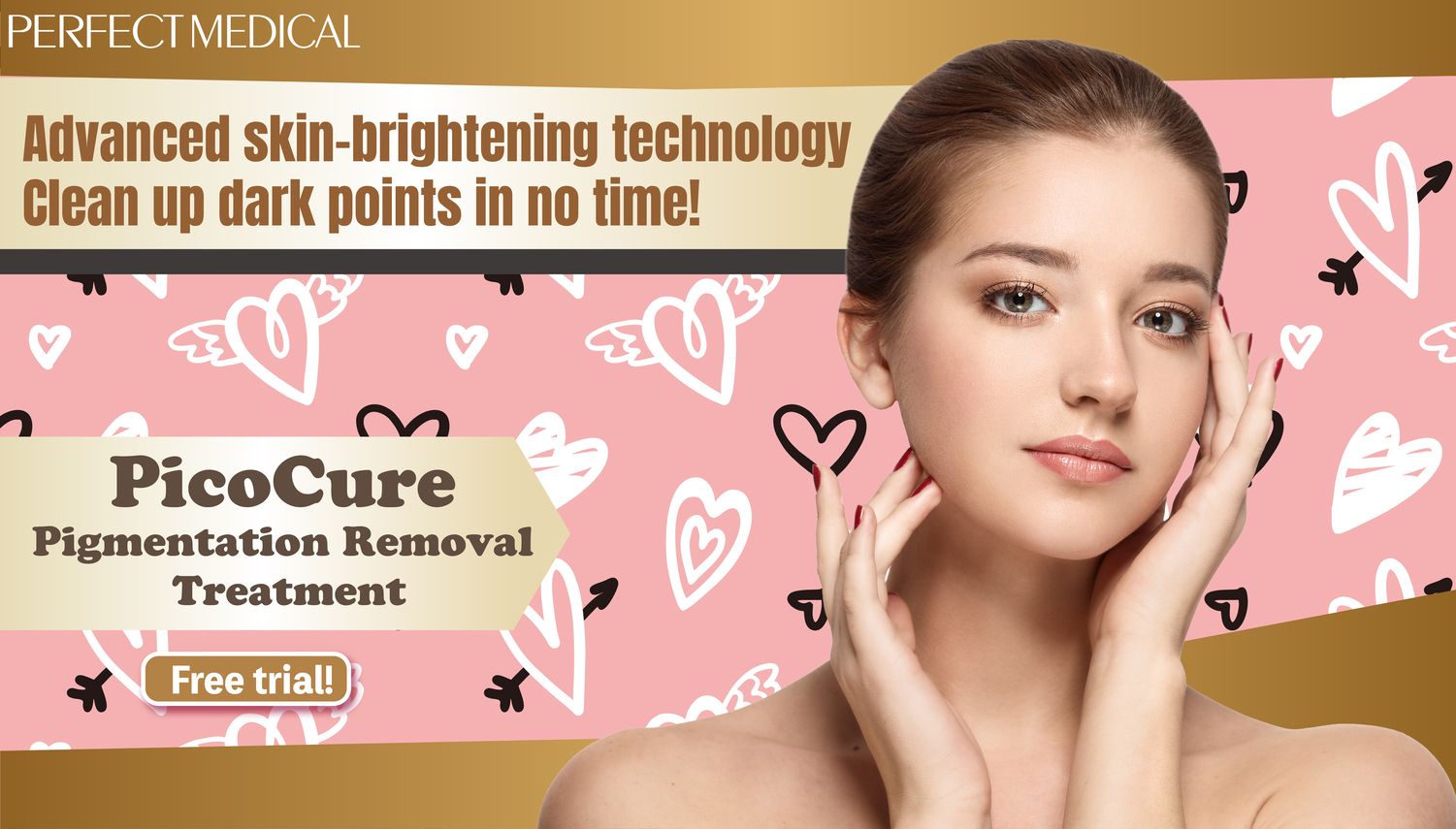
免費體驗
PicoCure Pigmentation Removal Treatment
1 Minute Self-Registration
Date should not be before minimal date
FAQ

How does azelaic acid work?
Azelaic acid works by killing acne-causing bacteria, reducing inflammation, and unclogging pores. It also inhibits the production of melanin in hyperpigmented areas, leading to a reduction in dark spots and a more even skin complexion over time.
Should I apply azelaic acid before or after moisturizer?
Apply azelaic acid before your moisturizer. This allows the azelaic acid to penetrate the skin more effectively, while the moisturizer helps seal in the treatment and hydrate the skin.
Can azelaic acid make acne worse?
Initially, azelaic acid might cause a slight increase in acne as your skin purges. This is temporary and should improve as your skin adjusts to the treatment, leading to clearer skin.
Will azelaic acid dry out my skin?
Azelaic acid can be drying for some skin types, especially at higher concentrations. It's essential to use a good moisturizer and start with a lower concentration to minimize potential dryness.
How does azelaic acid compare to salicylic acid?
Both azelaic acid and salicylic acid can treat acne, but azelaic acid also targets hyperpigmentation and rosacea. Salicylic acid is a BHA that deeply cleans pores, making it ideal for oily skin types.



